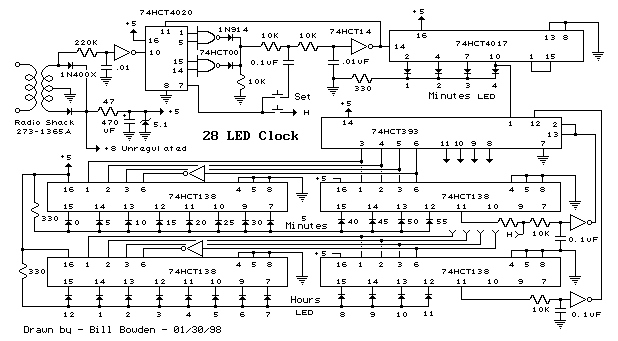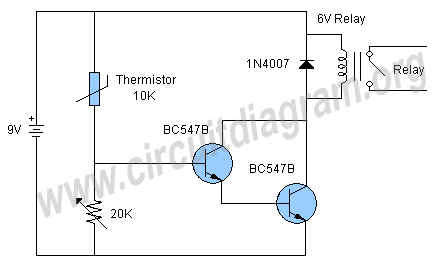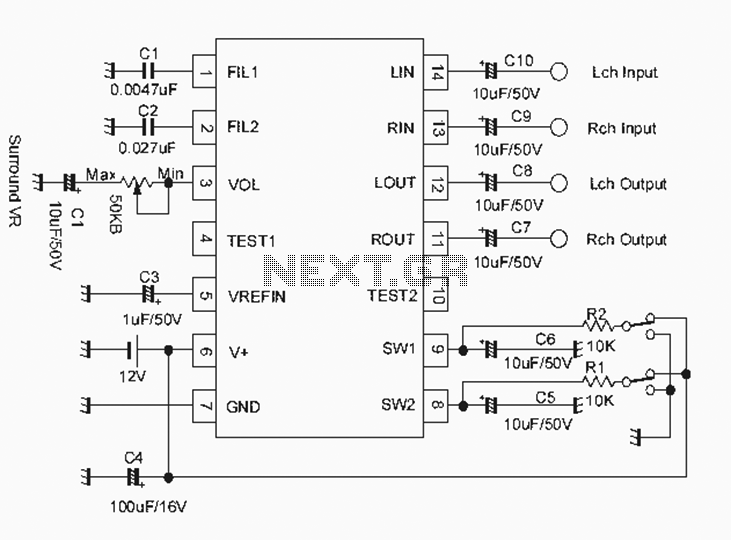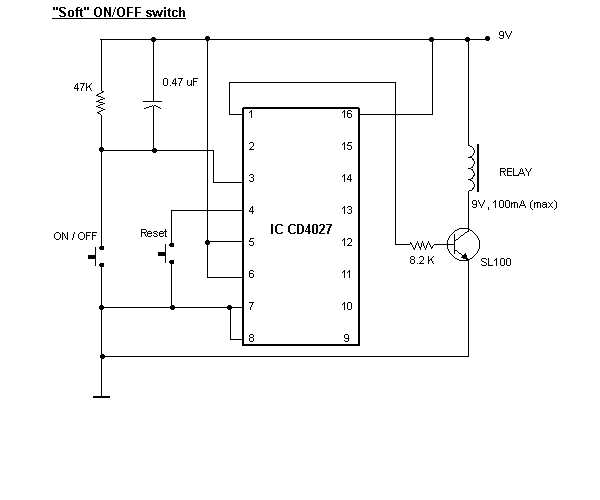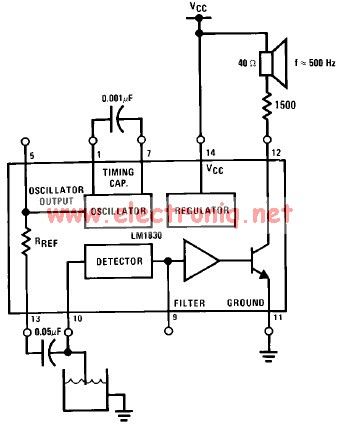
Circuit for ultrasonic threshold detection
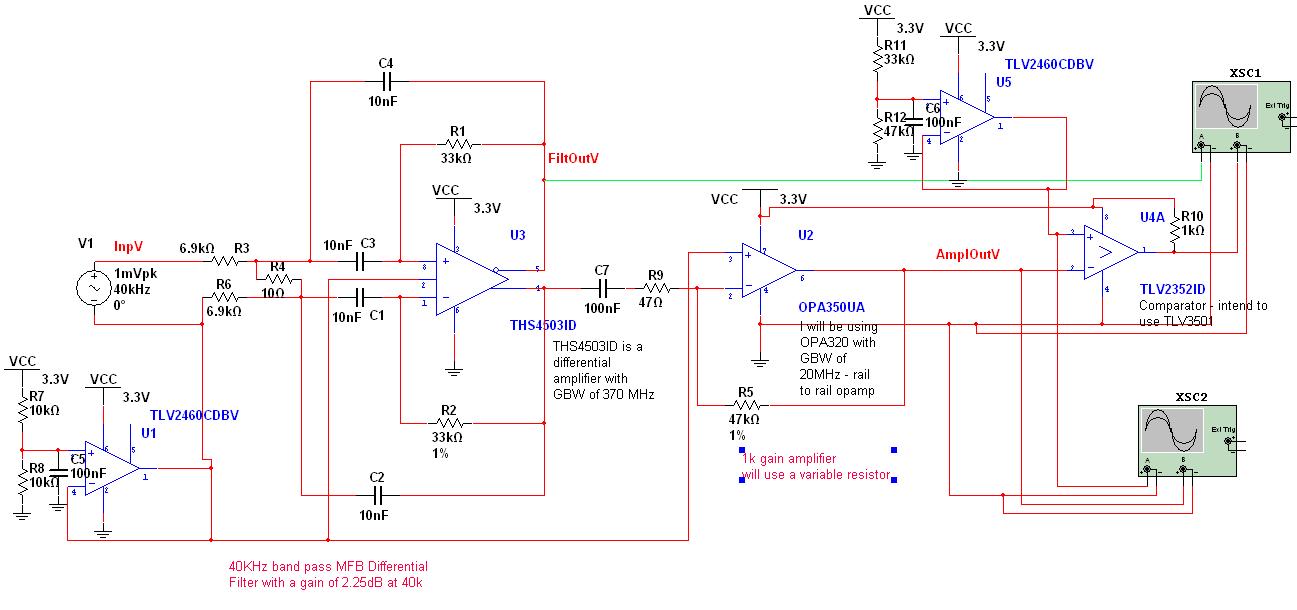
A circuit has been designed to detect the duration of an ultrasonic pulse as it travels a certain distance. The input signal is sourced from a 40 kHz ultrasonic receiver. The first stage consists of a 40 kHz band-pass filter featuring a 1 kHz pass band, implemented as a differential multiple feedback (MFB) filter with a gain of 2, providing 25 dB at the center frequency. In the feedback path of the differential amplifier, a 33 kΩ resistor has been utilized instead of the ideal value of 31.6 kΩ. Suggestions for circuit improvements are appreciated, particularly regarding the addition of a capacitor to the supply rail and VOCM to minimize power supply noise. The TH4503 provides the necessary minimum gain-bandwidth (GBW) to meet the filter requirements. Using the 33 kΩ resistor slightly increases the gain and lowers the center frequency. Simulations of the filter can be performed using TINA-TI. Concerns have been raised about achieving a gain of 1000 V/V at 40 kHz from a single stage. The OPA320 operational amplifier lacks sufficient bandwidth for this gain at 40 kHz. It is recommended to distribute the gain across two operational amplifiers, such as the OPA2320. The OPA320 offers approximately 55 dB of open-loop gain at 40 kHz, necessitating 29.5 dB of closed-loop gain per stage, leaving limited loop gain. The OPA2350, with about 5 dB more gain at 40 kHz, may better facilitate the targeted 1000 V/V (60 dB) closed-loop gain. A higher gain-bandwidth operational amplifier may be required. Effective bypass capacitor paths should be placed at each point where Vcc and the 1/2 Vcc voltage connect to the operational amplifiers to ensure low impedance at the frequency of interest. The TLV2460 operational amplifiers driving the 1/2 Vcc line may become unstable if the capacitive load on their output is excessive. The TLE2426 is recommended to provide the 1/2 Vcc function, eliminating the need for two matched resistors and accommodating a wide range of capacitance. Although there is a risk of oscillation under specific load conditions, it does not appear to be an issue for this circuit. A discrepancy in component values has been noted when comparing the schematic with TI's FilterPro, particularly with the input resistors (R1), which are shown as 6.9 kΩ in the schematic while FilterPro suggests 12.28 kΩ. The power supply bypass capacitors on the 1/2 Vcc output level behave as capacitive loads to the TLV2460 output. Adding bypass capacitance of common values (10 nF, 100 nF, or more) constitutes a significant capacitive load. This load, combined with the amplifier's output impedance, introduces a pole that adds additional phase shift to the feedback loop, reducing the phase margin. If the phase margin approaches zero degrees at a frequency where the amplifier gain exceeds 1 V/V, the circuit may oscillate. Different operational amplifier models exhibit varying phase margins at the unity-gain cross frequency, and their output impedance versus frequency can differ significantly, both of which are critical in assessing stability when driving capacitive loads. Operational amplifier data sheets typically include graphs indicating phase margin versus load capacitance or overshoot versus load capacitance, which can help determine stability.
The circuit design focuses on accurately measuring the duration of ultrasonic pulses, which is crucial for applications such as distance measurement and object detection. The initial stage, consisting of a differential MFB filter, is essential for isolating the desired frequency from the ultrasonic receiver while ensuring minimal distortion. The choice of components, particularly the resistors in the feedback loop, influences the filter's performance. The deviation from the ideal resistor value may lead to slight shifts in gain and frequency response, warranting careful consideration during the design process.
For improved stability and performance, the implementation of bypass capacitors is vital. These capacitors should be strategically placed to ensure low impedance at the operational frequency, effectively filtering out high-frequency noise from the power supply. The selection of operational amplifiers is critical; while the OPA320 is a viable option, its limitations in bandwidth necessitate the exploration of alternatives such as the OPA2350. By distributing gain across multiple stages, the design can achieve the desired amplification without compromising stability.
The potential for oscillation due to capacitive loads must be addressed by selecting appropriate operational amplifiers and ensuring that the circuit remains stable across various load conditions. The TLE2426 offers a solution for generating a stable 1/2 Vcc reference, simplifying the design and enhancing reliability. The discrepancies in component values identified through simulation tools highlight the importance of thorough verification during the design process, ensuring that the final implementation meets the intended specifications.
In summary, the circuit's design should prioritize stability, gain distribution, and noise reduction while ensuring that the performance meets the requirements for ultrasonic pulse detection. Careful selection of components, along with rigorous testing and simulation, will contribute to the successful implementation of the circuit.I have designed the attached circuit for detecting how long an ultrasonic pulse need to to travel a distance. the input signal is going to be from a 40 k ultrasonic receiver. First stage is 40k Band pass - 1k pass band - differential MFB filter with a gain of 2. 25dB at Center frequency. In feedback path of differential amplifier I have used 33k in stead of ideal value of 31. 6k. I will appreciate some useful comments on how this circuit can be improved. Also I am going to design a PCB using smt components. I need suggestion to improve the circuit like adding capacitor to supply rail and VOCM which will reduce power supply noise etc. The TH4503doesprovidesthe necessary minimum gain-bandwidth (GBW) requiredto support your filter requirements.
The effect of using the 33k resistor willincreasethe gain slightly and move thecenter frequencydownby asmall amount. You can see the affects if you simulate the filter using TINA-TI. I can`t help but wonder why youchose touse the 33 k 1%, when 31. 6 k 1 % is a standard value too. I am concerned with attempting to get a gain of 1000 v/V at 40 kHz from a single stage. The OPA320 does not have sufficient bandwidth to supply that gain at 40 kHz. I suggestdividing the gain up equally between two operational amplifiers in a dual amplifier ( OPA2320 ).
The OPA320 appears to have about 55 dB of open-loop gain at 40 kHz and each stage would need 29. 5 dB of closed-loop gain -so there isn`t much loop gain left. The OPA2350 has about 5 dB more gain at 40 kHz so two stages may come closer in developing the 1000 V/V (60 dB) closed-loop gain you seek. A higher gain-bandwidth operational amplifier may be necessary. You willneed to place an effective bypasscapacitor path at each of the points where Vcc and the 1/2 Vcc voltage connects to the operational amplifiers.
These need to appear as a very low impedance at the frequency of interest. See the data-sheet for each amplifier you have selected for power supply bypass capacitor details. The TLV2460 operational amplifiers that drive the 1/2 Vcc lins may become unstable (oscillate) if the capacitive load on their output becomes too large. A device that is designed to provide the 1/2 Vcc function, eliminate the need for two matched resistors, and will drive a wide range of capacitance is the TLE2426.
There is a small possibility of oscillation under a certain load condition, but for your circuit doesn`t appear to be an issue (Fig 17 in data-sheet). I don`t know what filter synthesis program you used for the filter, but I do note a discrepancy in one component value when I check the circuit using TI`s FilterPro.
The input resistors (R1) are shown in your schematic as 6. 9 k. FilterPro produces a value of 12. 28 k. Possibly, one of my assumptions about your filter response is incorrect. The power supply bypass capacitors that you place on the 1/2 Vcc output levelappear as a capacitive load to the TLV2460 output. Addingabypass capacitancewith common valuesof 10 nF, 100 nF, or more, isconsidered alarge capacitive load.
The capacitive load, in conjunction with the amplifier`s output impedance, result in a pole that adds additional phase shift to the feedback loop. This reduces the phase margin and if at some frequencythe margingoes to zero degrees and the amplifier gain is great than 1 V/V, the circuit becomes an oscillator.
Different operational amplifier models willhave a different phase margin at the unity-gain cross frequency and their output impedance vs. frequency can be very different as well. Both are significant factors in determining whether a particular operational amplifier will be stable when driving a capacitive load.
You can usually find a graph inan operational amplifier`sdata-sheet indicating phase margin vs. load capacitance, or overshoot vs. load capacitance that will provide agood indication ofstability. 🔗 External reference
The circuit design focuses on accurately measuring the duration of ultrasonic pulses, which is crucial for applications such as distance measurement and object detection. The initial stage, consisting of a differential MFB filter, is essential for isolating the desired frequency from the ultrasonic receiver while ensuring minimal distortion. The choice of components, particularly the resistors in the feedback loop, influences the filter's performance. The deviation from the ideal resistor value may lead to slight shifts in gain and frequency response, warranting careful consideration during the design process.
For improved stability and performance, the implementation of bypass capacitors is vital. These capacitors should be strategically placed to ensure low impedance at the operational frequency, effectively filtering out high-frequency noise from the power supply. The selection of operational amplifiers is critical; while the OPA320 is a viable option, its limitations in bandwidth necessitate the exploration of alternatives such as the OPA2350. By distributing gain across multiple stages, the design can achieve the desired amplification without compromising stability.
The potential for oscillation due to capacitive loads must be addressed by selecting appropriate operational amplifiers and ensuring that the circuit remains stable across various load conditions. The TLE2426 offers a solution for generating a stable 1/2 Vcc reference, simplifying the design and enhancing reliability. The discrepancies in component values identified through simulation tools highlight the importance of thorough verification during the design process, ensuring that the final implementation meets the intended specifications.
In summary, the circuit's design should prioritize stability, gain distribution, and noise reduction while ensuring that the performance meets the requirements for ultrasonic pulse detection. Careful selection of components, along with rigorous testing and simulation, will contribute to the successful implementation of the circuit.I have designed the attached circuit for detecting how long an ultrasonic pulse need to to travel a distance. the input signal is going to be from a 40 k ultrasonic receiver. First stage is 40k Band pass - 1k pass band - differential MFB filter with a gain of 2. 25dB at Center frequency. In feedback path of differential amplifier I have used 33k in stead of ideal value of 31. 6k. I will appreciate some useful comments on how this circuit can be improved. Also I am going to design a PCB using smt components. I need suggestion to improve the circuit like adding capacitor to supply rail and VOCM which will reduce power supply noise etc. The TH4503doesprovidesthe necessary minimum gain-bandwidth (GBW) requiredto support your filter requirements.
The effect of using the 33k resistor willincreasethe gain slightly and move thecenter frequencydownby asmall amount. You can see the affects if you simulate the filter using TINA-TI. I can`t help but wonder why youchose touse the 33 k 1%, when 31. 6 k 1 % is a standard value too. I am concerned with attempting to get a gain of 1000 v/V at 40 kHz from a single stage. The OPA320 does not have sufficient bandwidth to supply that gain at 40 kHz. I suggestdividing the gain up equally between two operational amplifiers in a dual amplifier ( OPA2320 ).
The OPA320 appears to have about 55 dB of open-loop gain at 40 kHz and each stage would need 29. 5 dB of closed-loop gain -so there isn`t much loop gain left. The OPA2350 has about 5 dB more gain at 40 kHz so two stages may come closer in developing the 1000 V/V (60 dB) closed-loop gain you seek. A higher gain-bandwidth operational amplifier may be necessary. You willneed to place an effective bypasscapacitor path at each of the points where Vcc and the 1/2 Vcc voltage connects to the operational amplifiers.
These need to appear as a very low impedance at the frequency of interest. See the data-sheet for each amplifier you have selected for power supply bypass capacitor details. The TLV2460 operational amplifiers that drive the 1/2 Vcc lins may become unstable (oscillate) if the capacitive load on their output becomes too large. A device that is designed to provide the 1/2 Vcc function, eliminate the need for two matched resistors, and will drive a wide range of capacitance is the TLE2426.
There is a small possibility of oscillation under a certain load condition, but for your circuit doesn`t appear to be an issue (Fig 17 in data-sheet). I don`t know what filter synthesis program you used for the filter, but I do note a discrepancy in one component value when I check the circuit using TI`s FilterPro.
The input resistors (R1) are shown in your schematic as 6. 9 k. FilterPro produces a value of 12. 28 k. Possibly, one of my assumptions about your filter response is incorrect. The power supply bypass capacitors that you place on the 1/2 Vcc output levelappear as a capacitive load to the TLV2460 output. Addingabypass capacitancewith common valuesof 10 nF, 100 nF, or more, isconsidered alarge capacitive load.
The capacitive load, in conjunction with the amplifier`s output impedance, result in a pole that adds additional phase shift to the feedback loop. This reduces the phase margin and if at some frequencythe margingoes to zero degrees and the amplifier gain is great than 1 V/V, the circuit becomes an oscillator.
Different operational amplifier models willhave a different phase margin at the unity-gain cross frequency and their output impedance vs. frequency can be very different as well. Both are significant factors in determining whether a particular operational amplifier will be stable when driving a capacitive load.
You can usually find a graph inan operational amplifier`sdata-sheet indicating phase margin vs. load capacitance, or overshoot vs. load capacitance that will provide agood indication ofstability. 🔗 External reference
Warning: include(partials/cookie-banner.php): Failed to open stream: Permission denied in /var/www/html/nextgr/view-circuit.php on line 713
Warning: include(): Failed opening 'partials/cookie-banner.php' for inclusion (include_path='.:/usr/share/php') in /var/www/html/nextgr/view-circuit.php on line 713
